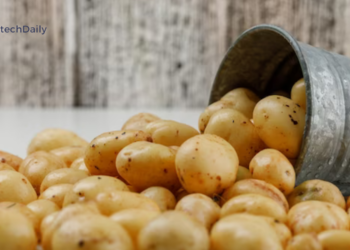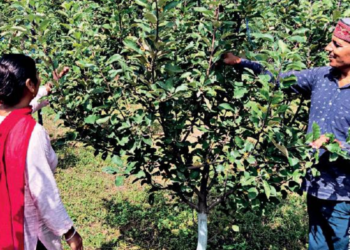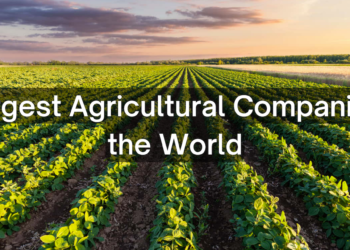Planning for a successful crop can be a daunting task. However, with the right knowledge, tools, and preparation, it can be a rewarding and enjoyable experience. From understanding the soil in your area to choosing the right seed, there are numerous facets to proper crop planning.
Knowing the best ways to plan your crop is an important part of the process, as it can help you maximize the potential of your harvest and ensure success.
Types of crops to consider
There are a number of different crops you could choose to grow, and each has its own benefits. Depending on your climate, soil type, and available space, you can select from a wide variety of plants and vegetables. Some of the most common crops for small-scale harvesting include:
- Beans
- Broccoli
- Carrots
- Cauliflower
- Cabbage
- Cucumbers
- Eggplant
- Lettuce
- Peas
- Potatoes
- Squash
- Tomatoes
- Sweet potatoes
- Swiss chard
Keep in mind, there are many more options! This list is just meant to give you a brief overview. You can also choose to grow fruits, herbs, and grains. Depending on your location and space, you can select a wide variety of crops.
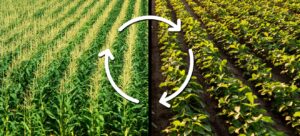
Consider the soil, climate, and other environmental factors
While selecting crops can be an exciting part of crop planning, it is important to consider the soil in your area and any other environmental factors. When selecting crops, it is important to take into account the soil type in your area. Soil can have a significant impact on the success of your crops. If your soil is too heavy, rocky, or dry, it can inhibit the growth of your plants.
On the other hand, if the soil is too soft or waterlogged, your crops may not thrive. Additionally, when planning your crops, you should be aware of the climate in your area. While some plants are hearty enough to withstand almost any climate, others are much more selective. Knowing the average temperature and precipitation in your area is important for ensuring a successful growing season.
Selecting the right seed
When selecting which seed to use for your crops, there are a number of important factors to consider. For example, you should select seeds that are appropriate for your climate and soil type. Additionally, you may want to select seeds that are resistant to certain pests and diseases. Selecting seeds can be a challenge, but it is important to do your research and find the right ones for your specific growing conditions.
Keep in mind, you don’t have to start your seeds in a greenhouse or indoors. It is possible to plant your seeds directly in the soil and have a successful harvest. However, if you are growing your plants indoors or during a particularly challenging season, starting with seed can be a great way to increase your odds of success. Additionally, starting with seed can help you maximize your space and provide a steady harvest throughout the year.
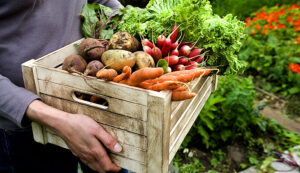
Preparing the soil
Before you even think about planting your seeds or transplanting your plants, you need to prepare your soil. It is important to take a close look at the type of soil you have and adjust it as needed. Soil that is too heavy or too light can inhibit the growth of your plants. Light soil doesn’t have enough nutrients, while heavy soil doesn’t have the proper drainage.
If your soil is too heavy, there are a few ways you can amend it. You can try mixing in sand or vermiculite to lighten it. Another option is to use a garden spade to aerate it. If your soil is too light, you can amend it with compost, manure, or soil supplements. It is also important to take into account the pH of your soil. You can do this by purchasing a kit from your local gardening store or online.
Fertilizing and watering your crops
Once your soil is properly prepared, you can start adding nutrients and amending your growing beds. Depending on the type of plants you are growing, you may want to add different nutrients. For example, plants like tomatoes, peppers, and broccoli are nitrogen-heavy plants, which means they need more nitrogen. On the other hand, plants like lettuce and peas have less nitrogen, so they need less fertilization.
Additionally, while fertilizing your plants, you will want to give them the right amount of water. Watering your plants correctly can be challenging, especially if you are growing in a smaller garden. One of the best ways to ensure your plants get the right amount of water is to use a water meter. You can also check the soil and see if it needs more water.
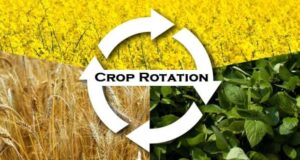
Pest and disease control
One of the biggest challenges when growing crops is controlling pests and diseases. Whether you are growing a garden or indoors, you will likely have to deal with pests and diseases at one point or another. There are a number of ways you can control pests and diseases, including organic practices, pest control, and disease control. Organic pest control includes selecting plants that naturally repel pests.
For example, growing mint may repel insects that are attracted to nearby plants. Similarly, growing basil may help repel mosquitoes from your area. You may also want to consider using pest control. There are several natural and chemical pest control methods. For example, you can use neem oil, pyrethrin, and diatomaceous earth to repel insects. Similarly, you can use baking soda or soap to kill pests on your plants.
Harvesting and storing your crop
Finally, once your plants have grown to maturity, it is time to harvest them. Depending on your crop, you may want to harvest your plants at certain times. For example, if you are harvesting vegetables like tomatoes or peppers, you may want to wait until they are fully ripened. However, if you are growing leafy greens, you may want to harvest them when they are young.
After harvesting your plants, you will want to store them in a way that keeps them fresh and edible for as long as possible. You can do this by harvesting them at the right time, properly storing them, and rotating your crops every few years. You can also freeze or can your harvest to extend its shelf life.

Utilizing crop rotation
While it may sound like an advanced gardening practice, crop rotation is actually quite simple. Crop rotation involves growing different types of crops in different areas every year. This can help decrease the risk of pests and diseases, as well as increase the number of nutrients in the soil. Additionally, crop rotation can help reduce soil depletion and increase the longevity of your gardening space.
When planning your crop rotation, there are a few things to keep in mind. First, you will want to select similar crops that grow best in your soil and climate. Second, you will want to plan your crop rotation based on your growing season. Finally, you will want to consider your garden space and ensure you have enough room for rotating your crops. For example, if you are growing carrots, you would want to rotate your crops every year with something like tomatoes, peppers, or lettuce.
Evaluating the success of your crop
Now that your plants are fully grown and you are ready to harvest, it is important to evaluate the success of your crop. Evaluating your crop can help you identify ways to improve your growing practice for the following season. Evaluating your crop can be as simple as counting the number of plants you have grown and the amount of yield you can expect.
Alternatively, you can keep a crop log, or journal, to track your plants from start to finish. Additionally, you can use technology to keep track of your plant growth. For example, you can use an app like Harvest to keep track of your plants, watering, and fertilizer.
Resources for crop planning
When planning your crop, it can be helpful to consult outside resources. There are numerous crop planning resources that can help you select the right seeds, determine the best-growing practices, and keep track of your plants. For example, you can use gardening forums to connect with other farmers and find helpful information about your growing practices.
Similarly, gardening blogs can be a great resource for learning about different crops and growing practices. Finally, there are many online resources, like a crop wheel, that can help you plan your crop and determine the best seeds, growing practices, and harvest time. A crop wheel is an excellent resource for those just getting started with crop planning.




